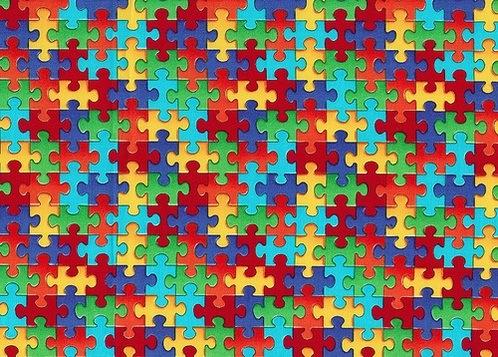
In 2000, the number of children in the United States diagnosed with autism was one in 188. That number rose dramatically by 2010, when one in 68 children were diagnosed with autism. Parents and medical professionals alike are justifiably alarmed at the skyrocketing rise in the disorder, especially since there are no real answers for what actually causes autism.
A new study from Denmark suggests as much as 60% of the rise in autism diagnoses could be attributed to shifts in diagnostic patterns over the years. Stefan Hansen, of Aarhus University in Aarhus, Denmark, says, “This study is important because it shows a large part of the increase has nothing to do with the environment, but rather administrative decisions.”
Hansen’s Study
Hansen’s study involved analysis of medical records of 677,915 children identified as permanent residents of Denmark at the time of their births from January 1980 through December 1991. Each child’s medical history was tracked until:
- Diagnosed with autism
- Death
- Emigration
- Study’s end on December 31, 2011
Autism Spiked in 1995
The research team identified a spike in diagnosis in 1995, the first year it was permissible to diagnose autism based on outpatient contacts alone. This expansion of diagnostic methods led to a 60% increase in autism diagnoses during the study period.
Hansen says this finding does not explain everything. “There’s the remaining 40%, so we shouldn’t stop here.”
“Psychiatry Bible”
Other administrative decisions have affected the rate of autism diagnosis in recent years. The American Psychiatric Association (APA) publishes the Diagnostic and Statistical Manual of Mental Disorders (DSM), which is often thought of as the “psychiatry bible.” All psychiatric disorders are categorized in the manual and all diagnoses come with the DSM code number associated with the disorder.
DSM-IV
The APA periodically updates the DSM. An update in 2013 brought sweeping changes to autism diagnosis.
Until 2013, the DSM-IV (version 4) was used. It required physicians to document six out of 12 criteria, or symptoms, before a diagnosis of one autism-related disorder could be made. Individual subtype disorders included Asperger’s disorder, childhood disintegrative disorder, and pervasive developmental disorder. But autism in any guise is highly complex.
DSM-5 and the Autism Spectrum Disorder
The 2013 update to DSM-5, which is the version used for diagnosis today, no longer identifies subtypes, instead clustering all forms of autism under the autism spectrum disorder (ASD). The criteria for diagnosing ASD is expected to actually reduce the number of autism cases.
While reducing the number of cases seems like a good thing, Michael Rosanoff is concerned. Rosanoff is the director of public health research at Autism Speaks, an advocacy-based organization that focuses on research, awareness, and outreach of the disorder. “Our concern has been that the constricting of the criteria would in fact artificially reduce the prevalence of autism.”
New Diagnosis Brings Healthcare Woes
One concern is that approximately 14% of the children diagnosed with autism before DSM-5 would now be diagnosed with social communication disorder (SCD) instead. This diagnostic change comes with a different DSM code, which means insurance coverage may be dropped or adversely altered. Treatment options may change or be discontinued altogether since the DSM does provide treatment guidelines for SCD. Without DSM guidelines, insurance coverage is not guaranteed.
The rise in the number of children diagnosed as autistic is as complex as the disorder itself. The rise is likely fueled by a combination of factors that include shifting diagnostic patterns, increased public awareness, insurance coverage, and on-going research into the disorder itself.
Sources:
- Hansen, Stefan N., Diana E. Schendel, and Erik T. Parner. "Explaining the Increase in the Prevalence of Autism Spectrum Disorders: The Proportion Attributable to Changes in Reporting Practices." JAMA Pediatrics 169.1: 56-62. The JAMA Network / American Medical Association. Web. 5 Aug. 2015.
- Sifferlin, Alexandra. "This May Explain the Rise in Autism Diagnoses." TIME. TIME Inc., 5 Jan. 2015. Web. 5 Aug. 2015.
- "DSM-5 & Autism: Autism-Speaks Study Clarifies Impact of New Criteria." Autism Speaks. Autism Speaks Inc., 27 Jan. 2014. Web. 5 Aug. 2015.
